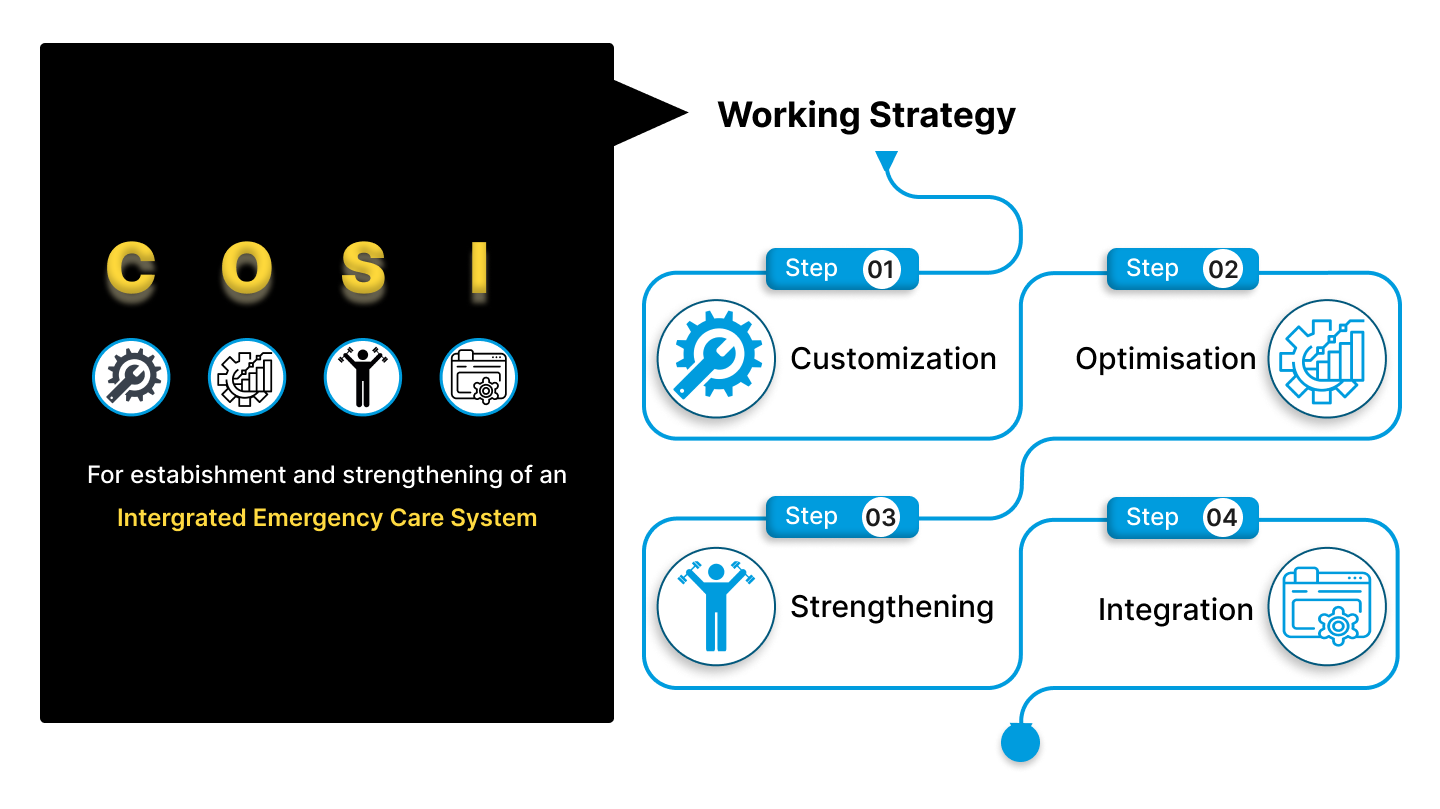Striving for an Integrated Emergency Care Systems in South East Asia Region
Emergency care systems (ECS) are an essential part of health service delivery. It has been estimated that a robust integrated emergency and trauma care system can decrease deaths by 50% in low- and middle-income countries (WHO). Well-designed emergency services facilitate timely recognition, treatment management and, when needed, continued treatment of the acutely ill at the appropriate level of the health system.
Access to emergency care including Trauma care delivered through delivery models that are people centred at all levels of health care, is essential to meet the goals of universal health coverage.
WHO CCET laying the foundations of integrated emergency and trauma care with COSI (Customised Optimised Strengthening Integration) strategy through CARE (Comprehensive Accessible Responsive Emergency) model.

1. Customization
Healthcare system customization has always been an important aspect of quality in healthcare. Facilities at different levels of healthcare have different needs and thus need to have a different system which delivers the emergency care that is tailored to patient’s particular needs
Our centre has been working on system customisation from a long time in different parts of India. Conducting need-based assessment of the facility and then developing & installing a need – based emergency care system which delivers the quality patient care timely.
The centre works with state governments to assess the status of emergency/injury care at all tiers of health care system and then developing a customised emergency care system.
2. Optimization
Our centre is constantly trying to improve emergency and trauma care services and so optimisation of the ED resources according to the need of the facility is one of the efficient ways to achieve that goal.
A well-functioning health system working in harmony is built on having trained and motivated health workers, a well-maintained infrastructure, and a reliable supply of medical resources and technologies, backed by adequate funding, strong health plans and evidence-based policies.
The Centre works closely with Ministry of Health & Family Welfare, Government of India and many international organisations & government (Sri – Lanka & Nepal) to draft policies and protocols for primary and secondary level healthcare facilities, including infrastructure, process, inventory requirement and checklists and also the standard treatment guidelines and clinical protocols for emergency and trauma to strengthen emergency and trauma care at both regional and national level.
3. Strengthening
The foundation of an effective health system is a well-trained and motivated health workforce, a well-maintained infrastructure, and access to medical resources and technologies supported by adequate funding, strong health plans, and evidence-based policy.
Our Collaborating centre works closely with the Ministry of Health & Family Welfare, the Government of India, and many international organizations & governments (Sri Lanka & Nepal) on the development of policies and guidelines for primary and secondary level health care facilities, including infrastructure, processes, inventory requirements, and checklists, and also on standard treatment guidelines and clinical protocols for emergency and trauma care for strengthening emergency and trauma care at the regional and national levels.
4. Integration
Integrating emergency and trauma care in the primary health care system has been a core area of WHO CCET’s work since its inception. It is at the heart of its work.
The Centre provides technical expertise for formulation of national and regional level policies with operational guidelines for infrastructure, process and monitoring and evaluation (key performance indicators) to develop a robust integrated emergency care system. This will strengthen emergency care system at primary as well as secondary care level, starting from health and wellness centres up to district hospital along with standardised referral system at all levels, including referrals to tertiary care centres.


